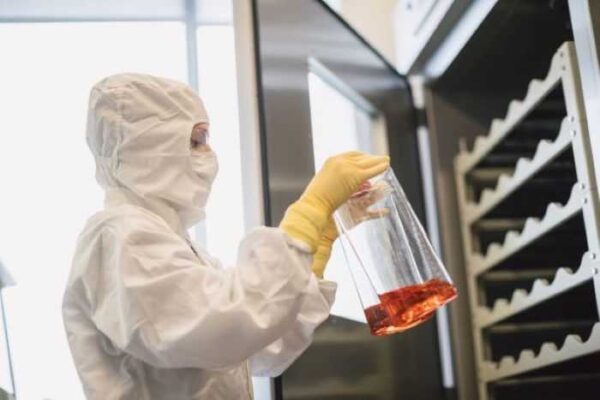
A worker at Spark Therapeutics’ manufacturing plant
One of the biggest questions about high-priced gene and cell therapies is how to pay for them, particularly as their list prices have climbed from the hundreds of thousands of dollars into the millions. But one of the country’s largest health insurance companies has a plan that it says will enable patients to receive the therapies without having to pay any related costs out of pocket.
Bloomfield, Connecticut-based Cigna said Thursday that it would introduce a program designed to protect participating organizations from the high cost of gene therapies. It will start with the two products that currently have Food and Drug Administration, Novartis and Spark Therapeutics’ Luxturna (voretigene neparvovec-rzyl), for a form of inherited retinal disease, and Novartis’ Zolgensma (onasemnogene abeparvovec-xioi), for spinal muscular atrophy. The program, called Embarc Benefit Protection, takes advantage of Cigna’s control of the pharmacy benefit manager Express Scripts, the specialty pharmacy Accredo and also companies like eviCore and CuraScript SD.

The Power of One: Redefining Healthcare with an AI-Driven Unified Platform
In a landscape where complexity has long been the norm, the power of one lies not just in unification, but in intelligence and automation.
According to an accompanying infographic, the program involves plans paying monthly for each member to enter the gene therapy network. Physicians then submit a prior authorization, while patients receive it at no out-of-pocket cost, and then pharmacies and distributors are paid via the Embarc program.
When Luxturna was approved, Novartis and Spark – whose takeover by Swiss drugmaker Roche is currently pending – gave it a list price of $850,000, or $425,000 per eye. Meanwhile, Novartis gave Zolgensma a list price of more than $2 million, making it the most expensive drug ever. Cigna cited figures from EvaluatePharma indicating that the cost of gene therapies in the U.S. is expected to reach $16 billion by 2024.
“Expensive therapies for rare diseases pose a new challenge for America’s healthcare system, and this challenge will grow as more therapies are approved by the FDA,” Cigna CEO Steve Miller said in a statement. “We are leveraging our collective capabilities to deliver on the true promise of modern medicine.”
Coming up with a way to pay for gene therapies has posed a significant challenge. Indeed, some experts have expressed reservations about whether the healthcare system can truly absorb the cost of the plethora of therapies expected to hit the market in the coming years. At the Biotechnology Innovation Organization’s annual conference in June, one interviewed expert said plans may be forced to either increase premiums or pay off the therapies’ costs over time, though already high premiums and thin margins leave little room to do that. Another interviewed expert at the same conference said automation of raw materials production could also help bring down prices.
Still, payment over time has generally been the favored model. At Veeva’s summit in May, Spark CEO Jeff Marrazzo said he saw payment over time as broadly applicable, but expressed disappointment that policies to enable installment payments for gene therapies were taking a long time to be put in place at the Centers for Medicare and Medicaid Services.
Photo: Spark Therapeutics








